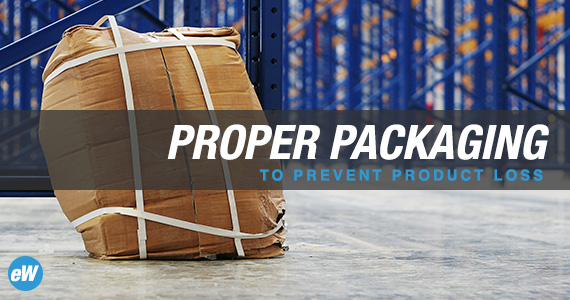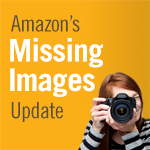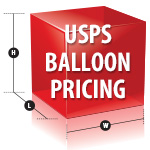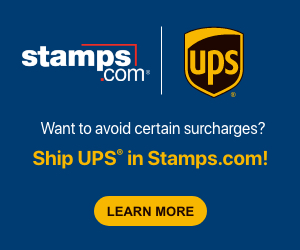 Most e-commerce businesses have experienced some form of product loss during shipping. In addition to losing business, customers can become frustrated and impatient waiting for a new and undamaged product to arrive.
Most e-commerce businesses have experienced some form of product loss during shipping. In addition to losing business, customers can become frustrated and impatient waiting for a new and undamaged product to arrive.
It is estimated that 1% of shipments shipped via UPS and FedEx are reported either lost or damaged. According to UPS, over 4.6 billion packages are shipped annually, whereas FedEx ship ships more than 3.3 billion packages annually. That is almost 8 million packages that are either lost or damaged every year. Some incidents cannot be prevented, but proper packaging can help greatly reduce the number of products damaged during shipping.
The best ways for e-commerce businesses to reduce product loss is to properly assess products being shipped, determine possible shipping methods and evaluate available packaging options along with associated costs.
Product Assessment
Regardless of the number of products being shipped, every e-commerce business should know product specifics including: width, length, weight, fragility, replacement cost, and sensitivity to exterior elements.
It is necessary to know the basic shipping dimensions of your product, no matter which carrier is used. These basic dimensions are a great starting point to start identifying proper packaging. The fragility of a product will help determine the amount of void fill needed within the packaging to protect the product and reduce shifting within the package during transportation.
Consider whether or not your product is sensitive to light, hot or cold, moisture, and a variety of external factors. Identifying external factors that can be potentially dangerous to the product is another important element that can help determine the right kind of packaging to use.
Possible Shipping Methods
E-commerce businesses around the globe usually ship parcel shipments via FedEx, UPS, USPS or DHL. Becoming familiar with the claims process of the chosen carrier will help prevent any unexpected hurdles and reduces unwanted stress.
Also, keep in mind that while products shipped via parcel are often shipped in boxes, products shipped via freight may be cradle packed without boxes. The ability to cradle pack often saves e-commerce businesses a ton on costs.
Evaluating Packaging Options
#1. Boxes
The vast majority of products shipped via parcel shipments are shipped in corrugated boxes. By identifying the product specifics, e-commerce businesses can determine the strength of box to be used. A single-wall corrugated box is most often used for small and medium sized products. Paying attention to the ECT (Edge Crush Test) rating for a box and burst test strength can prevent breakable products from being crushed and other heavier products from tearing a box. The ECT identifies the amount of weight that can be stacked onto a box wall before it collapses. The burst test strength identifies the pounds per square inch of bursting strength a box can withstand.
Larger, heavier products may need to be shipped in a double-walled or triple-walled corrugated boxes, that have increased ECT and burst test strength. Single-walled corrugated boxes can vary in cost from a few cents to a little over a dollar per box, depending on the size. Double-walled and triple-walled boxes are more expensive and can cost between $2 and $4 per box, depending on the size.
#2. Closure Materials
Tape is by far the most commonly used closure material in box packaging. There are thousands of tape options available, but the most widely used packaging tape is either a tan or clear two inch 1.6 mil to 1.8 mil packaging tape.
Heavier products may require a stronger tape or the use of staples. Standard packaging tape can come in thicknesses up to 3 or 4 mil. For anything in excess of a 3 or 4 mil tape strength, a reinforced tape is recommended. A reinforced tape is most commonly reinforced with strong fiberglass yarns. For extended burst protection, you may want to use a box stapler. Box staples are often used in combination with packaging tape for packages that weigh over 70 lbs.
Like boxes, tape pricing can vary depending on sizes, thicknesses, and types, a standard packaging tape case of 36 rolls often retails for $45-$65 per case depending on the brand. Heavier duty, thicker tape can cost over $5 per roll.
#3. Void Fill
Most everyone is familiar with bubble wrap and packaging peanuts. For years, they have been the most common void fill option available. A void fill material does what the name describes; it fills space voids within the packaging. This reduces the amount of product shifting during transportation. In recent years, packaging manufacturers have produced a variety of competitively priced void fill options that are also environmentally friendly.
Determining the right void fill should be based on the fragility of the product and the amount of void inside the exterior packaging. Bubble packaging is an excellent option for fragile products. Recently packaging manufacturers have produced a bubble wrap machine that inserts air into the wrap as it is being used. In addition, there are many affordable biodegradable bubble wrap options.
Packaging peanuts are often used to package a box within a box or as assisted protection with pre-molded Styrofoam inserts. They are not as effective in reducing shifting when used by themselves. Sustainable advancements have been made with packaging peanuts as well. Sustainable packaging peanuts are often made from corn starch and can be completely dissolved in water.
Another popular, sustainable, and inexpensive void fill option is Kraft paper. Kraft paper is often made from recycled materials and is available in a variety of weights or thicknesses. A lighter paper weight can be used with lighter objects and a heavier paper weight can be used with heavier objects.
Most all void fill options are fairly inexpensive ranging from a penny or less per square foot up to a few cents per square foot. Examining product specifics and exterior packaging dimensions can help determine the proper void fill to be used.
#4. Plastic Films
For some products and product shipping methods, the right plastic film can save thousands of dollars in damaged products. People are most commonly familiar with stretch wrap used to wrap around a pallet of goods. Pay attention to film thickness! A thin film will break and cause products to fall everywhere during transport resulting in damaged products and losses.
Stretch film thickness is often measured in gauges or microns, the higher the gauge or micron, the thicker the stretch film. The most common gauge thickness is 80. A true 80 gauge stretch film can typically hold a pallet of boxes up to 2,500 lbs. Sharper and heavier items require a thicker film.
There are other plastic films often over looked by e-commerce companies that can assist in shipping. Heat shrink film uses a heat sealer and heating element to shrink the film around the product. A thicker heat shrink film can be used to cover and protect the exterior packaging. This can help protect from exterior elements such as dust, moisture, etc. It can also help to reduce cost by eliminating the need for an exterior corrugated box when shipping some products. A thinner shrink film can be used to directly wrap the product. This will help protect the product from exterior elements during shipping and can also help prevent leakage of liquid products.
Most plastic films are very inexpensive compared to other packaging materials. Stretch film is often less than two cents per linear foot. Prices can vary depending on thickness, but often do not exceed more than five cents per foot. Shrink films are also very inexpensive costing only pennies per linear foot. Initial equipment costs for heat shrink film can vary from a couple hundred dollars to tens of thousands of dollars depending on output levels and machine size.
Conclusion
Being aware of each product being shipped, possible shipping methods, and available packaging options can save thousands in damaged products. The cheapest packaging option does not always mean the cheapest overall cost. Taking time to determine the right materials and process can lower overall product loss annually.
About the Author
Brent Roake is a writer and head of marketing at U.S. Packaging & Wrapping LLC., a full service packaging company providing packaging materials, supplies, and expertise to companies across the United States. Brent’s articles focus on how companies can save on overall costs by implementing the proper packaging processes.






